While hiking with my dog, I noticed that his protective instincts are heightened on the trials. I wondered what other breeds would be the best hiking companions that would protect you against animal encounters and perpetrators. I have done some extensive research to find out and I have narrowed down the best breeds for hiking with strong protective qualities.
The Best Hiking Breeds for Protection are:
- Akita
- American Pit Bull Terrier*
- Belgian Malinois
- Doberman Pinscher
- Dogo Argentino
- Dutch Shepherd
- German Shepherd
- Presa Canario
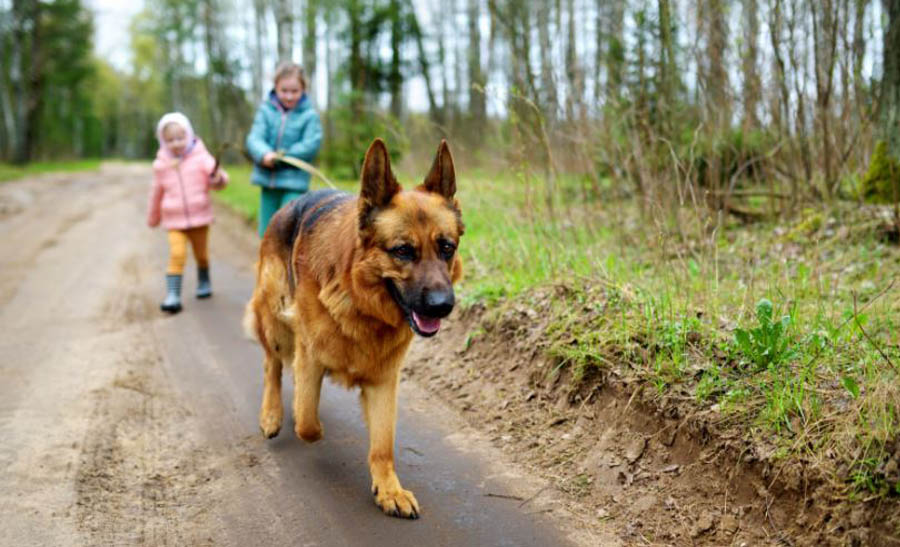
The qualities that are characteristic of having the best hiking abilities with a protective nature are;
- Dogs that have a good level of energy
- Dogs that can go as long as you can on the trails
- Dogs that have an athletic build for maneuvering over obstacles
- Dogs that look intimidating
- Dogs that exhibit fearless qualities
- Dogs that are bred or known for having protective or guarding nature.
I have looked at 45 dog breeds with protective qualities and fearless nature and have analyzed them on there hiking abilities.
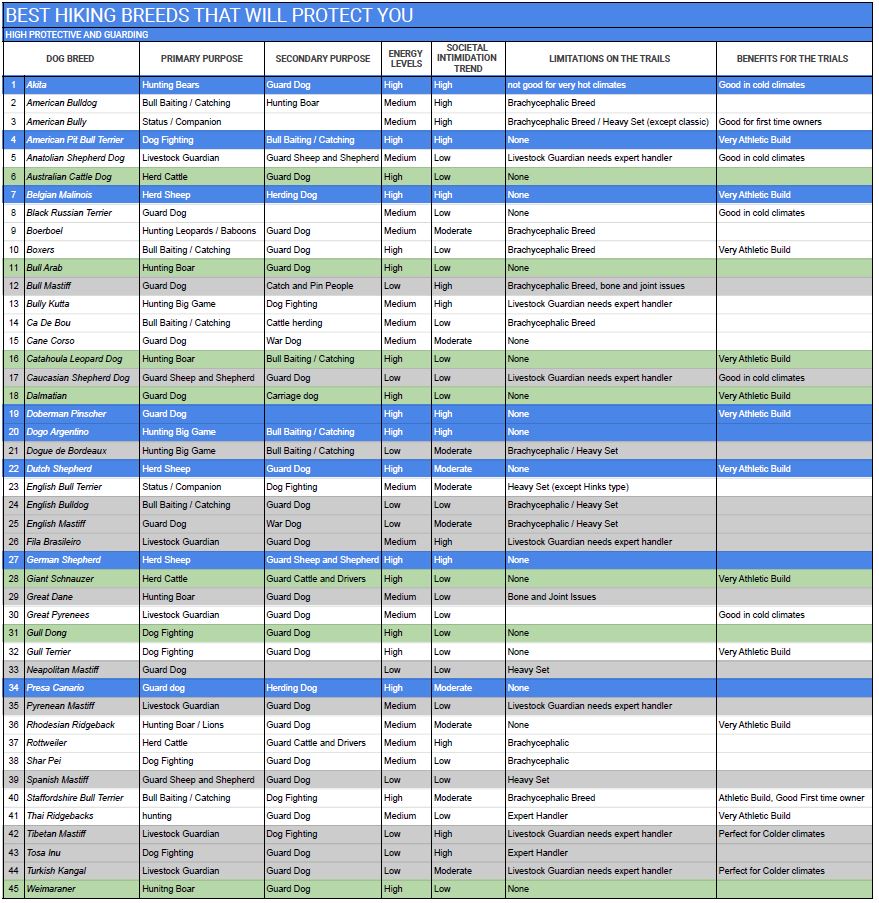
For the very best hiking breed that have protective qualities, I have excluded dogs that have low to moderate energy levels, brachycephalic dogs, and dogs that are heavy set with overly bulky physique. The reason for this is that we are looking for the best hiking breed that can go the distance as long as you can.
While out on the trials I have come across animal encounters and a few dodgy characters. Having Snoopadoo by my side gives me great peace of mind, especially when I am hiking alone with him.
While hiking, he is very alert of his surroundings and is very standoffish when other hikers approach. Often, he will give a warning bark to alert me that there are people up a head.
I am not certain why he does this because he does not behave like this when we are out in the neighborhood and he is very social and wants to meet everyone. It could be that there are no other people around and he can sense that we are more vulnerable to wild animals to perpetrators.
Risks In The Environment
Going out on the trials does put you at risk of trying to get help if something goes wrong, This is simply because there are less people around. Also, on some trials mobile/cell coverage may not be available.
Not being able to receive help or alert people, exposes you to a risk that perpetrators may want to take advantage of. Depending on where you are in the world this risk could be severely high or it could be rare.
Another risk is animal encounters, having a dog by your side may help you deter or even fend off a wild animal. Most wild animals will stay clear of dogs and will move away if they smell or hear people and dogs approaching.
However, the wind conditions may be blowing the other direction and even wild animals can be surprised or startled at your approaching presents.
I would always recommend hiking with other people even if you have a dog. However, having a dog is better than not having anyone at all. Especially if you are a woman.
Will Your Dog Protect You?
It is important to note that all dog breeds have some level of protective qualities. For some breeds, this may just be warning barks like a watch dog or it might mean that the dog will want to engage with the attacker to protect its family.
A dog that is willing to engage, may only do this when you are already on the ground being attacked which is kind of too late. Or the dog may just want to bite the person’s ankles and then risk being kicked to the head.
Regardless of the breed, a dog needs to be taught how to protect and attack on command to be effective in protection. This needs to be taught by professionals so that the dog learns these commands properly and learns how to control these actions and when to let go.
Inside Edition and Koin 6, have featured everyday dogs being challenged to see if they would stop an attacker or an intruder. They are good to watch and you might be surprised which dogs did the best.
Perceived Attributes of What Makes a Dog Look ‘’Dangerous’’ or Intimidating
Some people have reserved concerns about training a dog to attack. However, they would still like to get a dog that looks like it can handle itself.
Then getting a breed that looks ‘’dangerous’’ can be all that is needed to keep perpetrators at a distance.
How a breed looks ‘’dangerous’’ is developed through the collective minds of society over time through a cycle of media sensationalism.
- Breed receives negative media attention
- Negative attention attracts people who buy that certain breed to Intimidate others
- Such people neglect these dogs and often teach them bad behaviors
- The dog eventually bites or attacks someone
- The Media covers the story of the attack in a sensationalistic way, completing the cycle over again.
The Pit Bull Placebo publication by Karen Delise outlines that through history, the media’s influence on dog breeds as perceived as ‘’dangerous’’ resulted in more ownership of that breed. This rise in ownership of a breed can lead to a rise in dog attacks, which would then feed the media completing this cycle.
This has been the case for many breeds throughout history and the below list are the breeds that were once feared and have had excessive exaggerated media coverage either through newspapers, novels, films, music videos, television shows and commercials.
- 1850 – 1910 Bloodhounds
- 1850 – 1910 Newfoundlands, Mastiff, St Bernards
- 1900 – 1950 Collie Breeds
- 1910 – 1930 Airedale Terriers
- 1920 – 1930 German Shepherds
- 1945 – 1979 Dobermans
- 1980 – 1990s Rottweilers
- 1990 to present American Pit Bull Terrier
If you want to know more see ‘’What Makes a Dog Dangerous’’
It’s important to note that many other breeds have very good protective qualities, however these dogs may not be perceived as being ‘’dangerous’’ in the collective minds of society. Such dogs include Sha Pei, Blue Heelers and Dalmatians to name a few, which all exhibit very good protective qualities.
For example, You may have a tough Dalmatian, who is not to be crossed with. However, society does not view these dogs as having an aggressive streak thanks to Disney. I have met some Dalmatians and I know they can make great guard dogs.
Having a Dalmatian may not be enough to ward off an attacker based on appearance. In the event of being attacked by someone, it is only then that the perpetrator really finds out about your tough Dalmatian, ready to defend you.
In contrast if you had a German Shepard with you, you may not have been approached in the first place.
Physical Attributes
So apart from media depictions and representations of the last 100 years, what other physical attributes would consist of a dog that looks tough and that it can handle itself. To analyze this we understand what makes something cute, to understand its opposite.
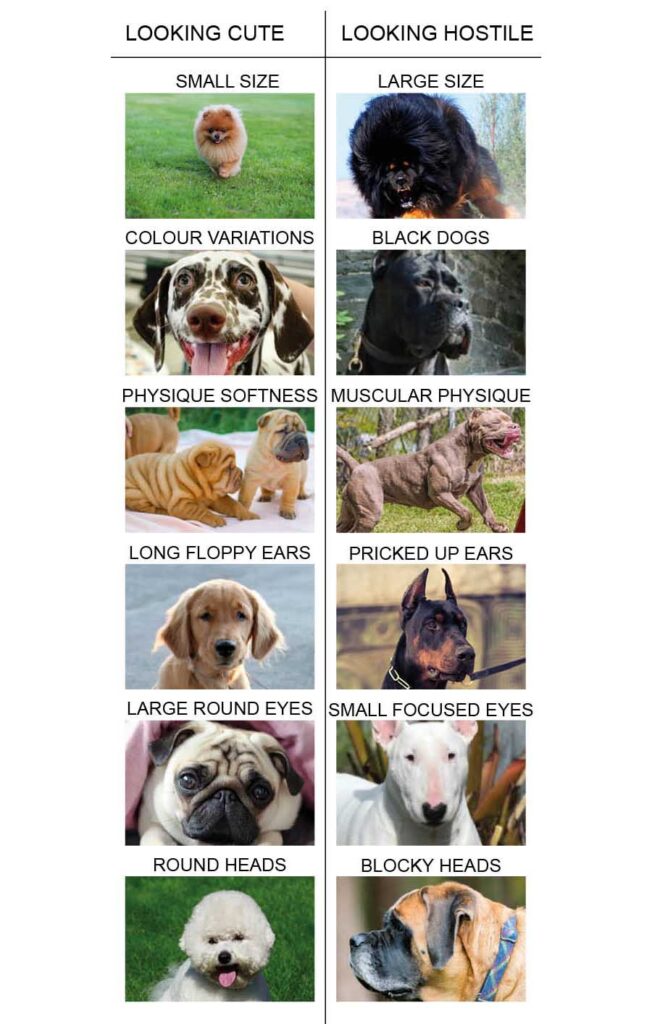
As you can see that many of the large intimidating breeds already possess these qualities, this is because these dogs were bred to be guard dogs which included features of their physical appearance to look a certain way. In contrast, this is also true for the cute dogs as they were bred to be lap dogs.
If you have a mixed breed dog with many ‘’hostile’’ looking qualities in your dog then I think you would be ok to deter would be attackers based on your dog’s appearance.
Protective and Guarding Instincts
As previously mentioned, all dogs contain some level of guarding and protective qualities, however the breeds that are bred for guarding come prepackaged with protective traits that far exceed other breeds.
Dogs with protective and guarding qualities and abilities are standoffish of strangers, alert to what is going on in their environment and are physically strong.
Here is a list of dogs that were specifically bred for guarding duties.
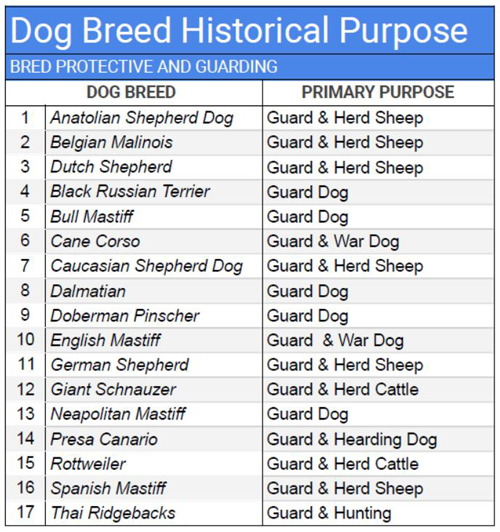
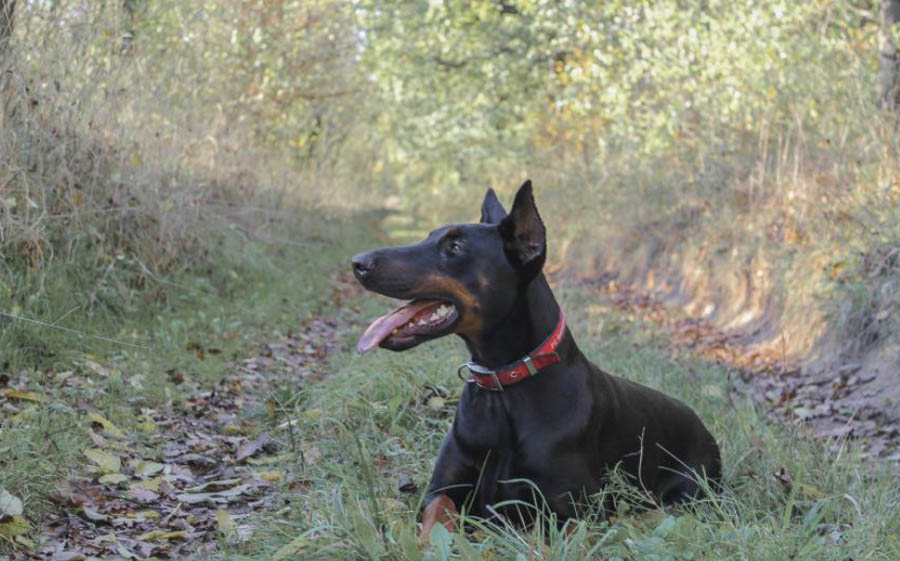
Fearless Qualities
One aspect of being a good protection and guarding dog is having fearless qualities. Dogs that were bred for big game hunting, blood sports such as dog fighting, bull and bear baiting have very low fear aversion and high pain thresholds. This is vital if you are being attacked by a large animal who doesn’t care about your dogs appearance.
This is vital if you are being attacked by a large animal who doesn’t care about your dogs appearance.
These dogs when faced with a threat turn to fight rather than flight. The dogs that did not die during these gruesome activities such as grappling with a bore, a bear or being thrown by a bull succeeded to live and pass on their genes.
Here is a list of dogs that were specifically bred to have fearless attributes.
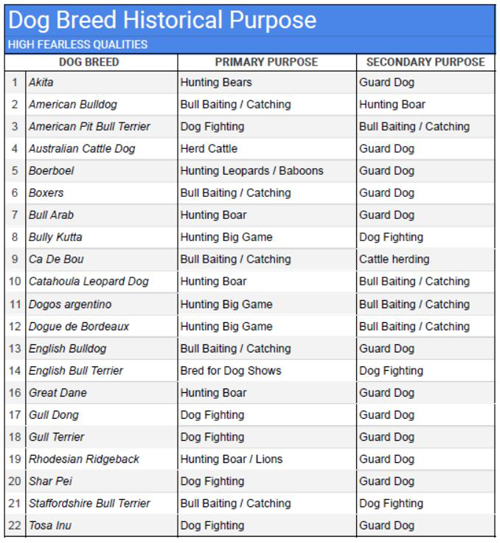
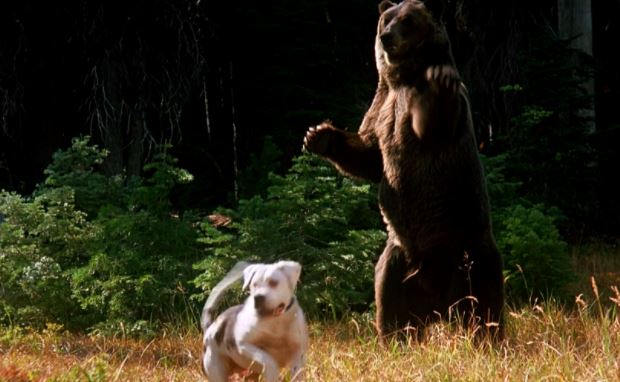
*Dog Fighting Breeds and Fearless Qualities.
Dogs originally breed for dog fighting depict very strong fearless qualities. These breeds were bred from dogs that were once used in blood sports such as bull and bear bating. Blood sports enthusiasts focused their attention on dog fighting when blood sports were outlawed in the mid of 1800’s. Illegal dog fighting continued, as they were more easily organized and didn’t take up much space.
Such dogs used for blood sports were now being bred to be smaller, as they were quick in the fight and easier to hide from authorities. Typically these dogs came from mix of old bulldog type and terriers breeds, which produced the various Pit bull breeds like American Pit Bull Terrier, Staffordshire Bull Terrier, and American Staffordshire Terrier.
However in the past 100 years the majority of the breeding has been from the people that just love the breed and the main purpose was bred for companionship and more recently a status dog. This has lead to a rise in different types of Pit Bull, such as: American bully, Pocket Pit Bull, XXL Pit Bull, Red Nose Pit Bull, Blue Nose Pit Bull, Monster Blue, Mexican Chamuco, Colby, Spike Pit Bull just to name a few. These sub breeds of the Pit Bull have not come from dog fighting activities rather it has come from Pit Bull enthusiast who are passionate about the breed.
Pit Bulls and other dogs breed for dog fighting typically have a strong desire to please, very strong prey drive and can have very strong ‘dog on dog aggression’. These qualities can have a positive impacts if you are being attacked by an animal out on the wild.
However, it may not be the case if a human attacked you. Apparently, a good fighting dog was a dog that exhibited strong aggression to another dog but didn’t attack the person handling the dogs. This was a key attribute to breeding winning fighting dogs.
Because of this, I have researched and found out mixed stories of pit bulls making very bad guard dogs when it comes to protection against a human attacker. This is also one of the reasons why pit bulls are easily stolen from peoples property as a stranger can just take them from the property without any conflicts.
In my experience with Staffordshire Bull Terriers I have found that some are good watch dogs that would likely engage, however I have also met a lot of Staffies who are completely gentle dogs. Having also spoken to people who have owned APBT in the US and South Africa, they too have reported that their protective abilities are mixed. Some were good at protecting while other pit bulls would most likely be super friendly and show the intruder in the home.
This sounds contradictive, as there are numerus pit bull attacks across the world at the moment, however most of the victims are related to the family or friends of the family. A lot of these attacks are due to very large Pit Bull population at the moment, mistreatment, lack of socialization, or pent up energy as they are a super high energy dogs and need a lot of exercise and training, which unfortunately for the dogs that have attacked they haven’t receive.
In choosing the alpha pup (see below) in the litter you will guarantee a well assured dog that would more likely protect its owner and not have fear related aggression which is attributed to a lot of the dog bite statistics. Due to societies fear of the breed at the moment, athletic abilities and high energy, these dogs would make a wonderful hiking dog that could make a perpetrator think twice about doing you harm.
The Best Hiking Companion with Good Protective Qualities.
What makes the best hiking companion is a dog that will go the distance on the trails. Most dogs will want to be with you and go as far as you can go. However due to some of the breeds limitations they may not be able to go the full distance.
It’s important that you respect your dog’s limitations. A lot of the time, a dog will continue to push through tiredness and suffering. This can lead to severe muscle fatigue that can last up to a week or more.
To be the best hiking breed, a dog needs to be able to keep up with you on a full day’s hike and be able to continue the next day if need be. For this you need a dog that has high energy, likes to have a purpose and wants to be able to work. These dogs need to be confident and trainable and have muscular yet athletic builds.
The Requirements for the best hiking companion are
- Can do a full day of hiking
- Can hike the next day after a full day of hiking
- Will be obedient
- Calm and confident
- Athletic attributes
Breeds that have been excluded are dog breeds that are too small and that need to be carried over obstacles and dogs that pose a risk to themselves in harsh environments such as overheating (Brachycephalic Breeds) or overly heavy bodies that could lead to bone diseases.
Dogs that exhibit low to moderate energy levels have also been illuminated as we are looking for the best breeds that will go the distance.
Exclusion list are as follows:
- Small breeds that need to be carried
- Low and medium energy breeds
- Heavy bodies causing significant bone and joint problems
- Brachycephalic breeds
- Dogs that are typically a pure guard livestock dog that needs an expert dog handler.
The Best Hiking Breeds with Protective Qualities
So the very best breeds of dogs that have strong fearless guarding qualities, are also known in the collective minds of society of being a guard dog and that have enough sustained energy to continue day after day on the trials are:
- Akita
- American Pit Bull Terrier*
- Belgian Malinois
- Doberman Pinscher
- Dogo Argentino
- Dutch Shepherd
- German Shepherd
- Presa Canario
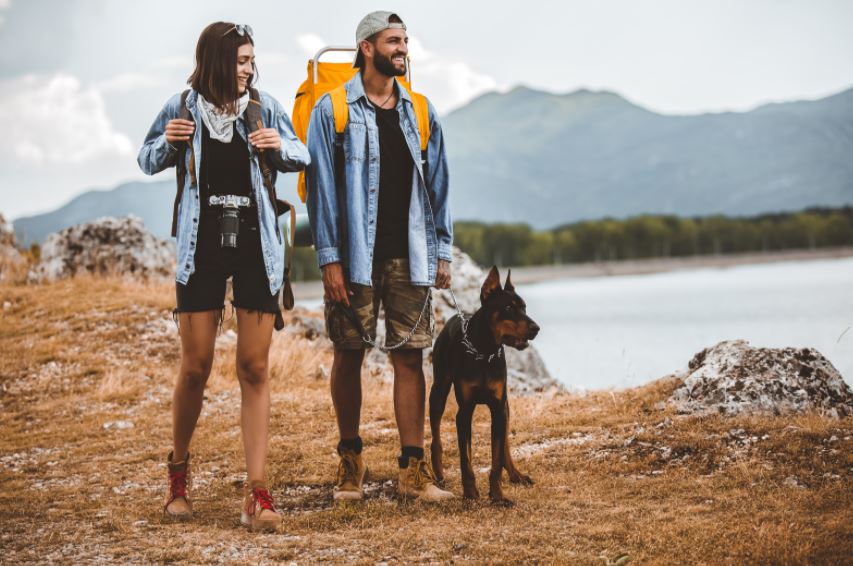
In Addition, the best hiking breeds that will also protect you out on the trails (which haven’t had the exaggerated media attention that instilled fear in society) that are also known as having good protective qualities. Are as follows:
- Australian Cattle Dog / Blue Heeler
- Bull Arab
- Catahoula Leopard Dog
- Dalmatian
- Giant Schnauzer
- Gull Dong
- Gull Terrier
- Weimaraner
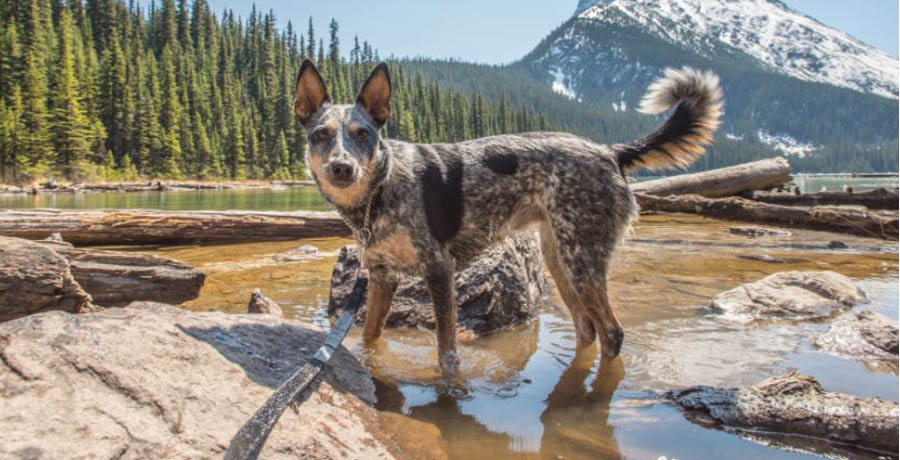
Breeds with Good Protective Qualities for Half Day Hikes
For Half day hikes with plenty of rest and water, many of these breeds would also make good hiking companions and that they would also protect you out on the trials. These dogs may not be able to go all day, day after day however, they would still be great for a one off occasion, enjoying the trails with you. These dogs have Medium levels of energy, really good protective qualities.
- American Bulldog
- American Bully
- Anatolian Shepherd Dog
- Black Russian Terrier
- Boerboel
- Boxers
- Bully Kutta
- Ca De Bou
- Cane Corso
- English Bull Terrier
- Fila Brasileiro
- Great Pyrenees
- Gull Terrier
- Rhodesian Ridgeback
- Rottweiler
- Shar Pei
- Staffordshire Bull Terrier
- Thai Ridgebacks
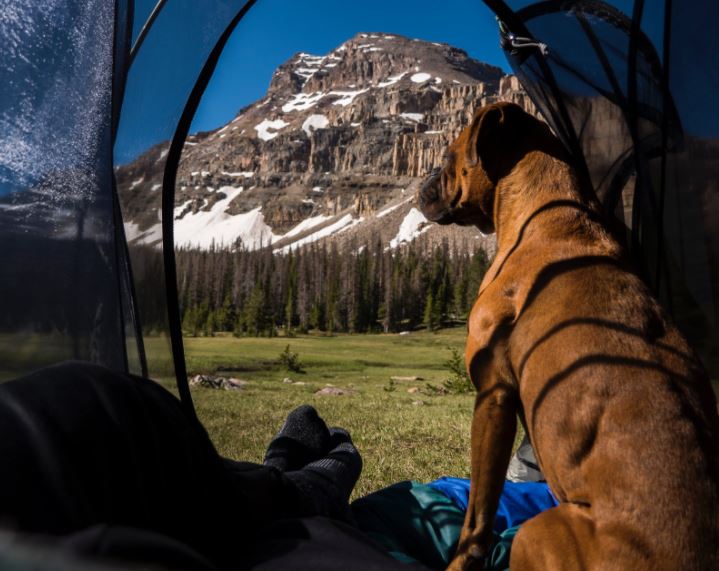
Dogs with Protective Qualities for ‘Drive Up’ 1 Hour Hikes
Dogs that are considered the couch potato’s with either a general low levels of energy or high energy in short bursts. These Dogs will still love being out on the trails. However id pick really short easy ‘Drive Up’ places where you can park the car and let the dog run around. Such dogs would only really be active for an hour, at which then they would likely just want to be sitting by your side taking in the scenery with you.
- Bull Mastiff
- Caucasian Shepherd Dog
- Dogue de Bordeaux
- English Bulldog
- English Mastiff
- Great Dane
- Neapolitan Mastiff
- Pyrenean Mastiff
- Spanish Mastiff
- Tibetan Mastiff
- Tosa Inu
- Turkish Kangal
Picking The Right Puppy
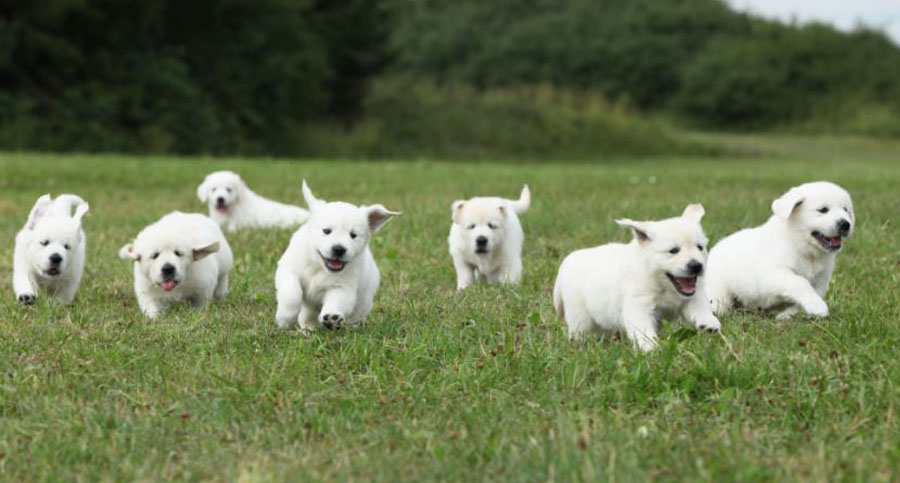
It’s important to note that picking the right puppy can make all the difference if your dog will defend you or you will have to defend your dog.
All police dogs, bomb detection dogs, military dogs, dogs used in obedience competitions, dog shows, animal actors dogs and guide dogs have all been hand selected from within the litter to best perform their duties. Not every dog in the litter will make a good protection or hiking dog regardless of the breed.
After doing some research on picking the perfect puppy, I have discovered from Cesar Millan the breakdown of the litter hierarchy which seems to be the simplest and easiest to understand which is as follows:
- Front of the Pack – Pick of the Litter -The Alpha Pups
- Middle of the Pack – Pet Quality – The Happy Go Lucky Pups
- Back of the Pack – Runt of the Litter – The Sensitive Pups
Front of the pack pups become dogs that are confident, independent, courageous, quiet, self assured, strong decision making abilities and aware to their environment. These are the dogs that are chosen for the dog Jobs as mentioned above.
It’s these dogs that are the best to have for hiking and protection as they are confident in all situations and take new environments and situations in their stride.
The middle of the pack puppies can also make good hiking buddies however they may need a little encouragement if they are faced with a new situations. In terms of protection they could be good or they may not engage.
For the dogs that are the back of the pack pups and described as sensitive, these dogs may experience anxiety even being in a completely new environment. They need lots of encouragement, time and patients from their owners for new situations and places. These dogs will often not defend you and will either cower behind you or even run away to avoid the danger.
Cesar’s Method to determine the front of the pack, is that you will start to notice upon observing the litter that the front of the pack puppy, will always be the puppy to get to the mum first for food. Middle of the pack will always get there after and the back of the pack will always get to the mother dog last.
In Conclusion
In conclusion, you have the best chance of having a dog that would protect you out on the trails if you selected one of the 15 breeds and selected the alpha puppy within the litter. The selected breeds would not only go the distance with you but would also aid in deterring and fending off attackers being animals or human.
If you are in a part of the world where the likelihood of being attacked is high, then Id strongly recommend you getting professional dog protection training for you and your dog. Even beginner level training with a professional will teach you and your dog environmental awareness and when to vocally initiate which may be all that is needed in a threatening situation.
